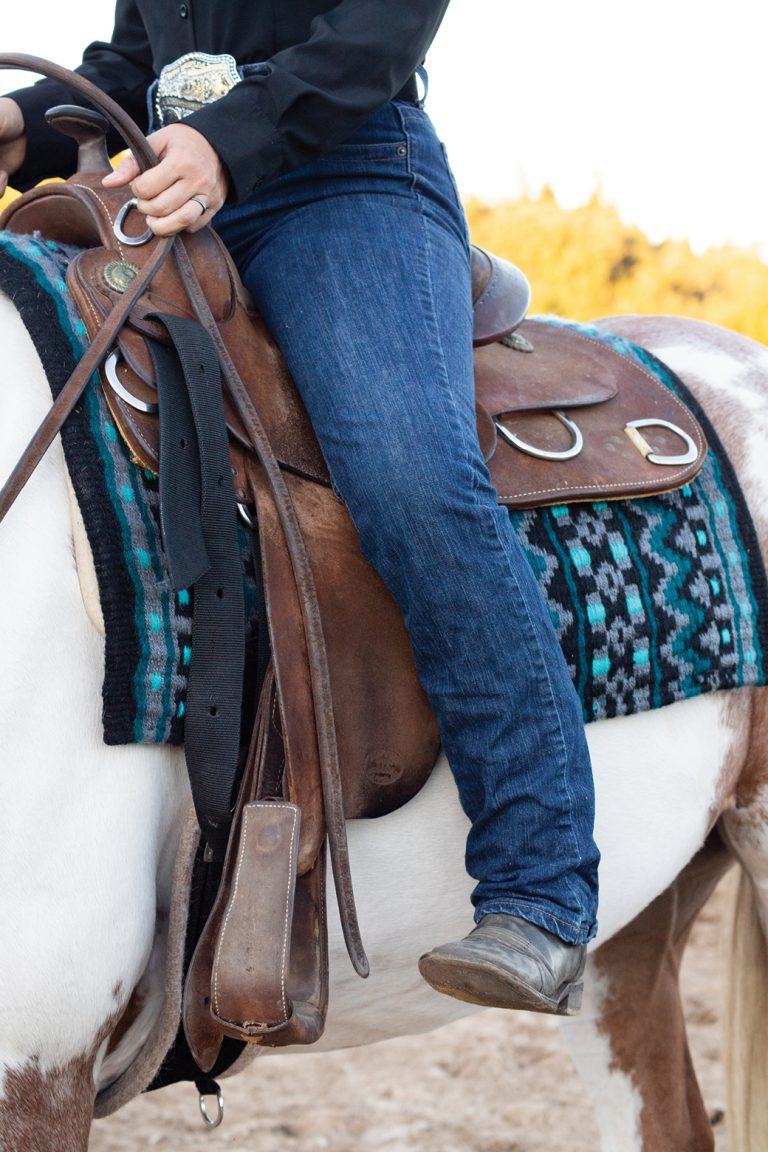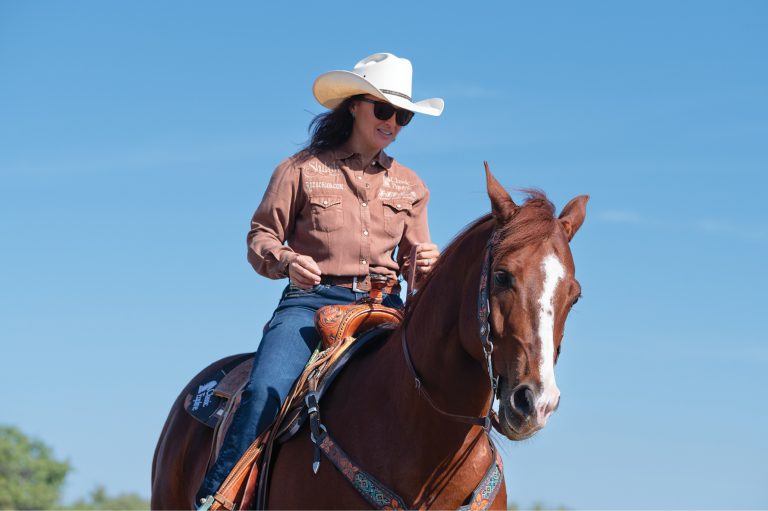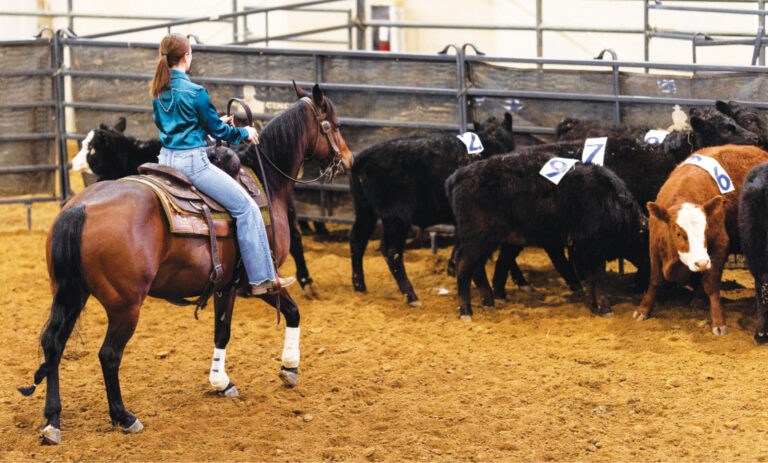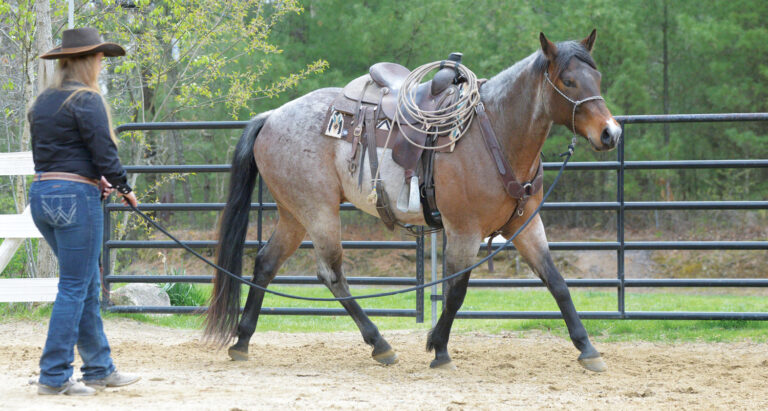Have you ever walked into the show pen and felt like you were on a completely different horse from the one that you were riding in the warmup? And felt that within minutes you went from show-ring ready, to dancing around in the center of the arena before the start of your pattern?
Your horse doesn’t know the stakes are higher when he steps into the show pen, so why does he drastically change once all eyes are on you? If your mindset changes when it comes time to show, chances are, the energy you’re creating with your body changes, too. These changes will translate to your horse, and he’ll start to change his game plan to reflect what your body is telling him to do.
The easiest way to improve your score and avoid creating an anxious environment for your horse is by focusing on your thoughts and the actions you’re creating from them. By getting your head in the game and taking control of your thoughts and emotions, you’ll have a better chance at accurately communicating with your horse in, and outside of, the show pen.
In this article, I’m going to go over how your thoughts affect your riding and why you should have a team-sport mentality when you’re competing. Then I’ll share a technique you can use when you’re in the saddle to get your focus back on your horse and not who’s watching you in the arena to help set you up for success at your next show.
More on Mindest: 4 Mindset Keys to Acheive Your Goals]

How Your Feelings Affect Your Riding
The biggest mistake you can make as a rider is believing your horse can’t read what you’re thinking. It’s not that he has a supernatural ability to read your mind, he just uses his survival instincts and physical senses to help determine if he’s in a safe environment or if he should be worried because of a nearby threat.
Whether you’re in the saddle or out of it, your thoughts reflect your feelings, which then create your actions. When you have positive thoughts, you’re more likely to have positive feelings, which result in positive outcomes. If your thoughts are negative, negativity is going to be represented in your actions, even if you don’t realize it or mean for it to.
If your mind starts to produce negative or nervous thoughts, your body is going to respond. It can be a small response, something you don’t even feel. But horses are sensitive animals; they can feel even the smallest of things—like a fly landing on their neck. So if you have a showing mindset where all you’re focused on is doing well, or winning, or making it into the finals of a large horse show, that’s going to affect your mindset, which is going to reflect your actions and how well you’re communicating with your horse in that moment.
This way of thinking isn’t just reserved for the show pen, either. Your thoughts will affect your actions when you’re out on a trail ride, too. For example, if you’re heading out on a ride for the first time that has a water crossing, and you know your horse is scared of water, you start to anticipate how he’s going to react before you even get to the crossing. Your horse then senses something is off, since you’re not communicating with him the same way you would at home, and that causes him to behave differently. This can create a snowball effect where you become even more nervous because you sense your horse getting nervous, creating a dangerous environment for the both of you.
Now let’s talk about the different forms of communication you use in the saddle: you have your bridle, your vocal cues, and then you have your body cues, which I consider to be the strongest tool you use to communicate with your horse at any time.
One of my favorite examples of using your seat to accurately communicate with your horse happened several years ago when Dan Huss showed Ms Dreamy in the senior reining finals at the AQHA World Championship Show. If you’re familiar with that iconic run, you know that Dan’s bridle broke in the middle of his circles, and rather than pulling up, he finished the pattern bridleless. When that bridle broke, Dan committed to continuing to ride his horse (even when things didn’t go according to plan), and because of that he was able to accurately communicate with her and guide her through the rest of the pattern.
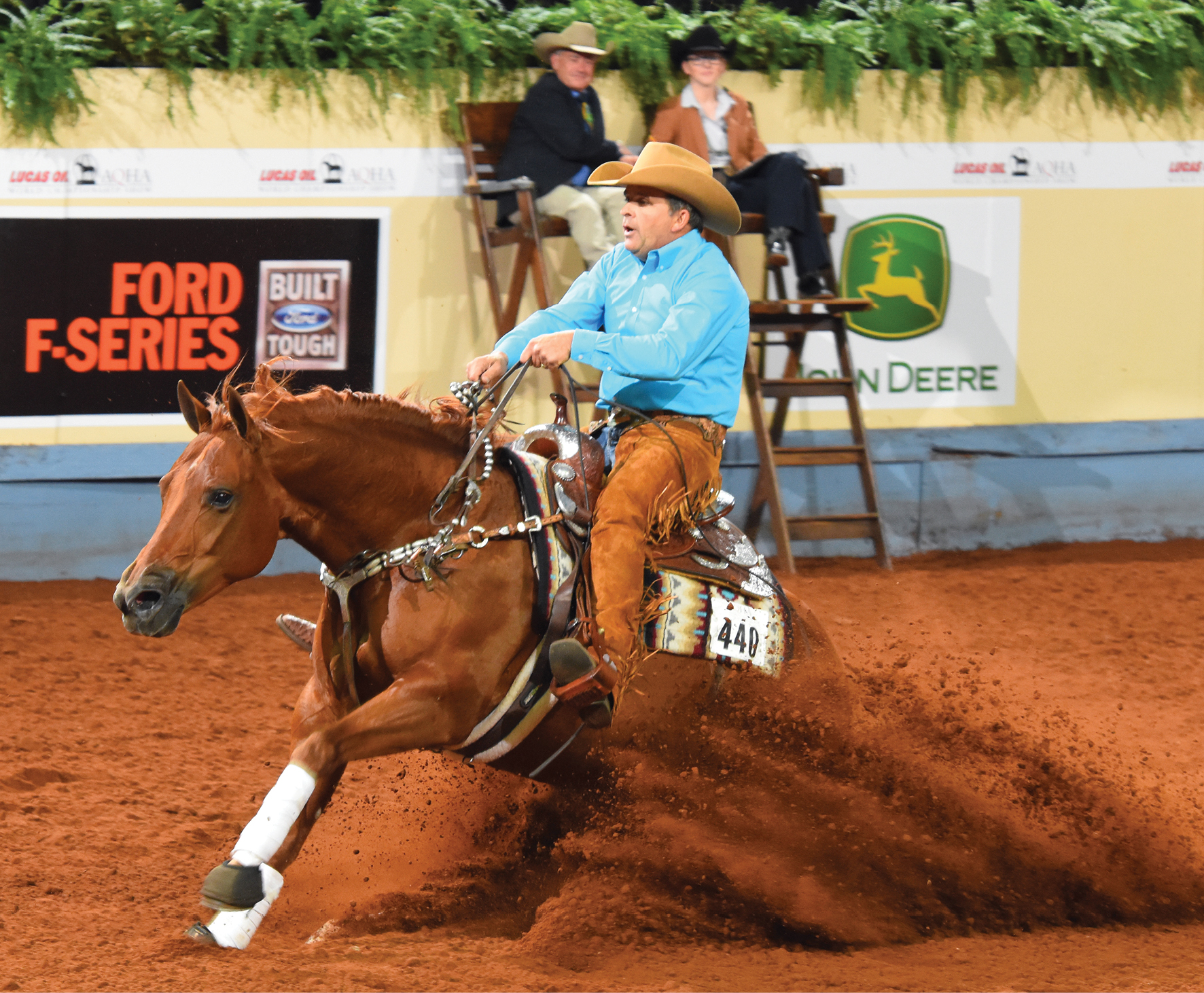
Teamwork Makes the Dreamwork
Many riders approach riding from an individual mindset, but I believe that in order to be successful and accurately connect with your horse, you need to look at it from team-sport mentality. The one thing that differs from most team sports is that your teammate, your horse, doesn’t speak the same language as you do. Instead, you must be able to use your body to accurately communicate with him. You also need to be able to read his body language to know what he’s thinking and feeling.
Winning runs at a show are not solely based on the talent of the rider or the talent of a horse. They’re based on the teamwork between the two. Those riders don’t completely change the way they ride when it comes time to show and then expect their horses to do everything on their own. They have a game plan, which helps them have a positive mindset, and they use clear and direct body cues to help their horses in the arena. When you work as a team, you’re more likely to have a positive experience in the show pen, which will also allow your horse to enjoy showing for years to come.
The Joker Technique
Another thing that differs in the horse-show world from other sports is the way we practice when we’re at shows. When a tennis player is getting ready for a big match, they can continue to train at a private tennis court before it’s time to compete. They don’t have to worry about the opinions of outside people during those sessions and can make sure that, mentally, they’re completely focused on the task at hand. But at horse shows, most places don’t have enough arena space to allow private training sessions. This means that when you’re at a show, all of your training sessions are publicly viewed.
If you’re like most riders, when you walk into the arena at a horse show, you immediately look up and see who is in there with you. This person could be sitting in the stands, or they could be in the arena riding their horse. It could be a judge, a fellow competitor, or even horse trainer.
Suddenly you’re aware of your surroundings and in that moment, it’s show time. Your only focus is on looking good because you care about this person’s opinion of you. You remind yourself not to focus on the person in the arena, but the more you tell yourself that, the more you think about them.
In the end, this kind of thinking becomes a distracting element in your mental capacity. Causing you to focus more on your surroundings and less time on schooling your horse.
If you’ve played cards before, you know that in every deck of cards there are two jokers. Not all games use joker cards, but when they do the jokers are usually the strongest cards within the deck. But if the game doesn’t require them, you remove those cards from the deck before you even begin. My joker technique will help you find your joker, or the individual who might distract you from having a good practice, and help you make the decision on if you can remove them from your game, so you can train the way you need to before going into the show pen.
Step 1: Find your joker. When you walk into the arena, I don’t want you to try and ignore the environment you’re in. Instead I want you to pick up your eyes and search for your joker immediately. Being the joker isn’t a bad thing, it just means that you care about this person’s opinion. If you don’t find a joker, that’s great. That means you can focus on riding your horse without any outside distractions. If you do find a joker, you can move to the next step of my technique.
Step 2: Make a decision. Now you get to make the decision on if your joker is in your game or out of it. If the joker is in your game, that means he’s the strongest player in your mind, and everything you do out there is going to be to impress this person. This also means you’re not going to be focused on preparing your horse the way you need to. But if you choose to eliminate the joker from your game and do what you must do to get ready to show, then you can move to Step 3.
Step 3: Practice ugly. This means exactly what it sounds like. Practicing ugly means you’re OK with having to ride your horse the way you need to in the warm-up pen. You should be focusing on his weaknesses and how you can improve on them, and not be worried about looking show-ring ready before it’s even time to show.
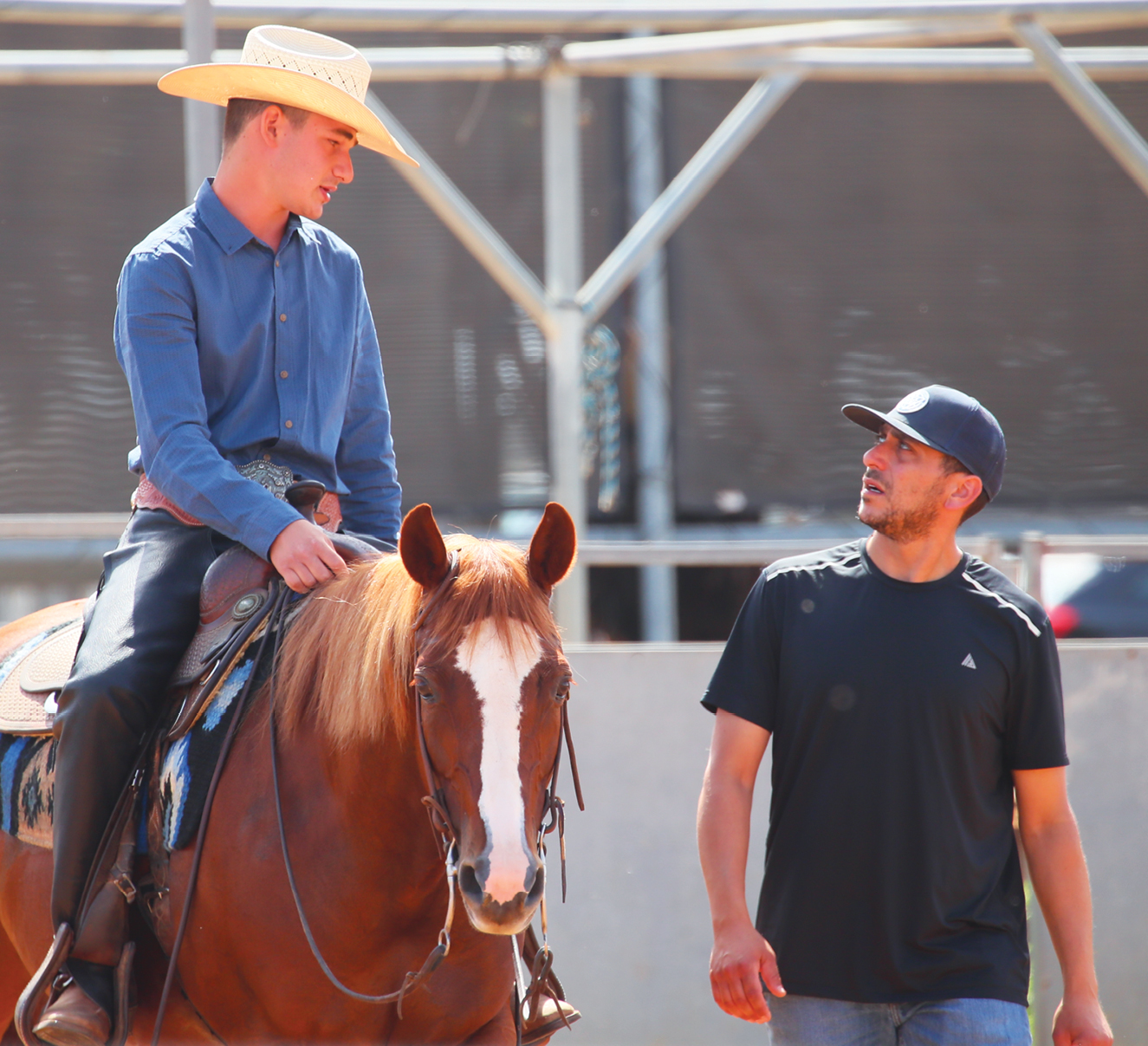
Practicing ugly does not mean riding aggressively. It just means that you’re brave enough to focus on your weaknesses in a public environment, even when important people are watching. It could be that your timing is off when you try to stop your horse, or maybe you just can’t find your path when you’re loping over trail obstacles and keep hitting them in the process.
This is the time to be brave and work on what you need to. At one point or another we’ve all struggled in the warm-up pen; most likely nobody is going to remember that moment besides you.
Once you can get your head in the game and focus less on the people around you and more on what your horse is doing, you’ll be able to show off your strengths in the show pen and shine when it comes time to go in front of the judges.

